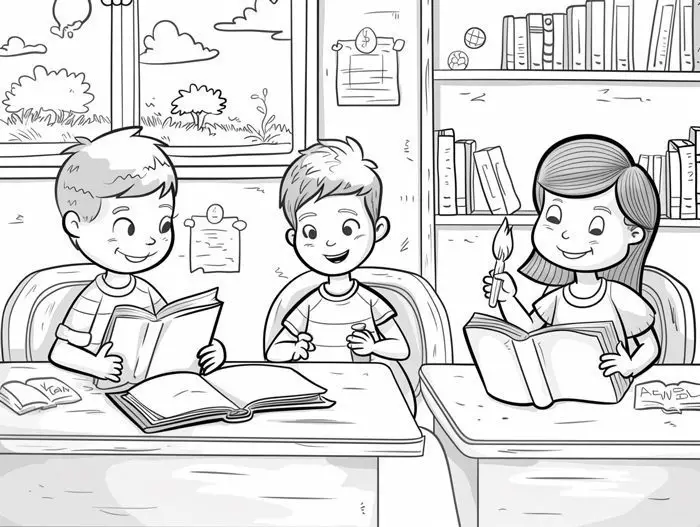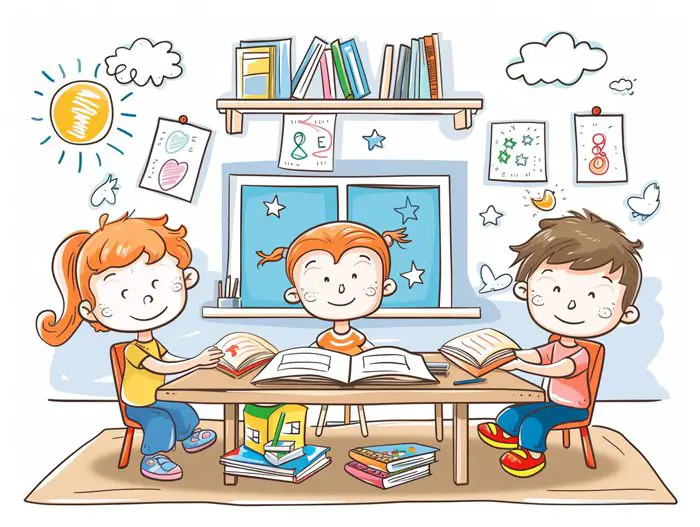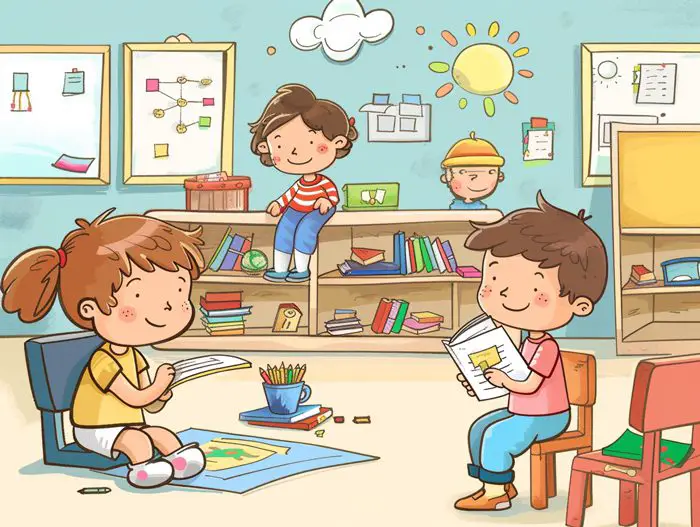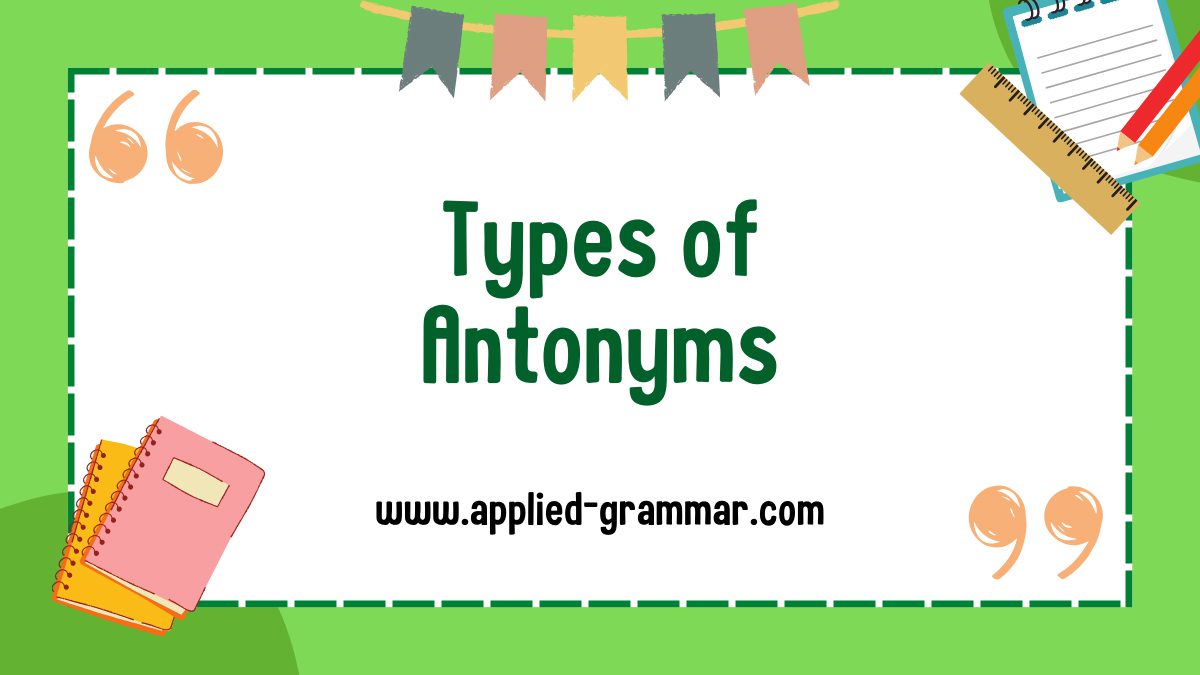Antonyms play a crucial role in language arts, adding depth and nuance to our writing. They are words that have opposing or nearly opposing meanings, allowing us to convey contrast and emphasize differences. In this text, we’ll explore the basic types of antonyms, focusing on complementary and gradable antonyms.
Complementary antonyms are pairs of words that represent extremes on a particular dimension. For example, hot and cold are complementary antonyms in the dimension of temperature, while fast and slow are complementary antonyms in the dimension of velocity. These antonyms highlight the stark contrast between two ideas, making them invaluable in creating vivid descriptions and engaging narratives.
On the other hand, gradable antonyms represent different degrees of intensity or quality. They allow us to express shades of meaning and introduce subtle variations in our writing. For instance, words like big and small, happy and sad, or hot and warm are gradable antonyms. By using gradable antonyms, we can add depth and precision to our descriptions, capturing the nuances of the ideas we want to convey.
In the following sections, we’ll investigate deeper into each type of antonym, providing examples and insights that will help you elevate your writing. So, let’s get started and unlock the power of complementary and gradable antonyms in your language arts journey.
Key Takeaways
- There are two basic types of antonyms: complementary and gradable.
- Complementary antonyms represent extremes on a particular dimension and create stark contrasts.
- Gradable antonyms represent varying degrees of intensity or quality and allow for more nuanced descriptions.
- Complementary antonyms cannot be graded or exist in degrees, while gradable antonyms provide a spectrum of options.
- Complementary antonyms highlight differences and add tension to writing, while gradable antonyms add depth and precision.
- By incorporating both types of antonyms, writers can create powerful, impactful, and engaging content.
Basic Types of Antonyms
Antonyms play a crucial role in enhancing the depth and nuance of language. Understanding the different types of antonyms can help you become a more skilled writer. In this section, we will explore two basic types of antonyms: complementary and gradable antonyms.

Complementary Antonyms:
Complementary antonyms are words that represent extremes on a particular dimension. They are like two sides of a coin, with no middle ground. Examples of complementary antonyms include hot/cold, fast/slow, and good/bad. These antonyms create a stark contrast and can be used to create vivid descriptions and engage readers. By using complementary antonyms, you can create a sense of tension or emphasize the differences between two objects or ideas.
Gradable Antonyms:
Gradable antonyms, on the other hand, represent different degrees of intensity or quality. They allow for a spectrum of options between the two extremes. Examples of gradable antonyms include hot/warm, tall/short, and happy/sad. These antonyms add depth to your writing by providing shades of meaning and allowing for more nuanced descriptions. By using gradable antonyms, you can convey varying degrees of intensity or quality, making your writing more engaging and expressive.
Understanding the distinction between complementary and gradable antonyms is essential for creating powerful and impactful writing. By incorporating both types of antonyms, you can add depth and complexity to your descriptions, engage your readers, and evoke a wide range of emotions.
Keep in mind that these antonyms can be used in various ways depending on the context of your writing. Experiment with different combinations and placements to find the most effective use of antonyms in your writing.
Complementary Antonyms

Definition of Complementary Antonyms
Complementary antonyms are a type of antonym that illustrate an “either-or” relationship between pairs of opposite words. Unlike other types of antonyms, complementary antonyms cannot be graded or exist in degrees. They are mutually exclusive and exist independently of each other. In simple terms, when one word in a complementary antonym pair is present, its opposite cannot be present at the same time.
Examples of Complementary Antonyms
Here are some examples of complementary antonyms:
- Push-Pull: These actions are complete opposites of each other, and there is no middle ground between them. You can either push or pull, but you cannot do both simultaneously.
- Right-Wrong: This antonym pair represents the concept of correctness or accuracy. Something is either right or wrong, with no in-between.
- Yes-No: These words indicate opposite affirmations or denials. You can answer with a “yes” or a “no,” but there is no middle ground.
- Exit-Entrance: These antonyms describe points of entry or exit, and they are completely opposite to each other. You either enter or exit; you cannot simultaneously do both.
Complementary antonyms play an important role in language arts and writing. They help to convey binary or contrasting ideas in a concise and impactful manner. By using complementary antonyms, you can create vivid descriptions and engage your readers by highlighting the stark differences between two concepts.
Experimenting with different combinations and placements of complementary antonyms can add depth and nuance to your writing. By understanding the distinction between complementary and gradable antonyms, you can craft powerful and impactful prose that resonates with your audience.
In the next section, we will explore gradable antonyms and how they differ from complementary antonyms.
Gradable Antonyms

Definition of Gradable Antonyms
In language arts, gradable antonyms are words that are at the opposite ends of a spectrum with some gradation between the two extremes. These antonyms represent a range of values or qualities, allowing for degrees and variations. Unlike complementary antonyms, which have a binary “either-or” relationship, gradable antonyms provide nuance and subtlety in expressing contrasting ideas.
Examples of Gradable Antonyms
Here are some common examples of gradable antonyms:
- Hot – Cold: Temperature is a classic example of a gradable antonym. The spectrum ranges from extremely hot to extremely cold, with varying degrees of warmth in between.
- Empty – Full: This gradable antonym showcases the concept of quantity. Something can be completely empty or completely full, but there are numerous levels in between, such as half-empty or partially full.
- High – Low: Height or elevation can be described using this gradable antonym pair. You can have something that is very high, moderately high, or extremely low, depending on the context.
- Young – Old: Age is another dimension where gradable antonyms come into play. We can describe someone as young, middle-aged, or old, depending on their age bracket.
These examples demonstrate how gradable antonyms allow for a more precise and nuanced expression of ideas. They provide a range of options to describe varying degrees or levels of a particular quality, making the language more diverse and engaging.
By incorporating gradable antonyms into your writing, you can add depth and complexity to your descriptions, making your content more captivating and informative.
Conclusion
Understanding the two basic types of antonyms, complementary and gradable, is essential for enhancing your writing skills. Complementary antonyms, such as push-pull, right-wrong, yes-no, and exit-entrance, convey binary or contrasting ideas in a concise and impactful manner. These antonyms play a crucial role in language arts by allowing you to express opposing concepts effectively.
On the other hand, gradable antonyms like hot-cold, empty-full, high-low, and young-old offer a range of values or qualities, enabling you to express degrees and variations. By incorporating gradable antonyms into your writing, you can add depth and complexity to your descriptions, making your content more captivating and informative.
Both types of antonyms provide nuance and subtlety to your writing, allowing you to express ideas in a more precise and nuanced way. Experimenting with different combinations and placements of these antonyms will help you create impactful and engaging content.
Incorporating complementary and gradable antonyms into your writing repertoire will elevate your language arts skills and make your writing more dynamic and compelling. Start using these antonyms today and unlock the full potential of your writing.
